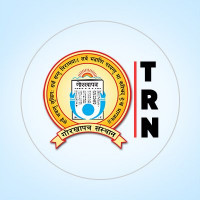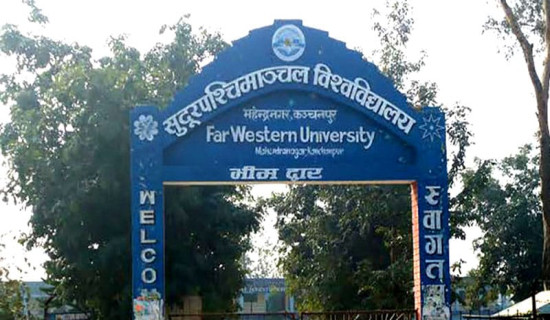- Wednesday, 5 November 2025
Fiscal Health Space in Nepal
Fiscal Health Space in Nepal
Gauri Pradhan
 Health
is a fundamental human right of people as per the UN Declaration on Human
Rights. The constitution of Nepal, 2015 also ensures fundamental health rights,
emergency health services and equal access to health services for all. Therefore, providing primary health facilities
to people and protecting their health rights is an essential obligation of the
state. However, seen from astand point of the present healthcare coverage and
the burden of health expenses of the people, Nepal is posed to encountering a difficult
road ahead.
Health
is a fundamental human right of people as per the UN Declaration on Human
Rights. The constitution of Nepal, 2015 also ensures fundamental health rights,
emergency health services and equal access to health services for all. Therefore, providing primary health facilities
to people and protecting their health rights is an essential obligation of the
state. However, seen from astand point of the present healthcare coverage and
the burden of health expenses of the people, Nepal is posed to encountering a difficult
road ahead.
According to WHO, health financing is a core function of health systems that enables progress towards universal health coverage by improving adequate services and financial protection of people. However, in Nepal, people spend a big chunk of their income to meet their healthcare needs. Unfortunately, millions of people in Nepal are deprived of essential healthcare services.
Consequently, poor and
vulnerable people are falling further into the poverty trap due to the rising
health expenses, particularly during their illness. Therefore, Nepal needs to
appropriately review its health coverage status and extend the fiscal space for
healthcare services to respond to the dire needs of people's health issues.
An
international study reveals a need for 86 USD per capita investment in the
health field of low-income countries like ours. But, Nepal's per capita
investment in health is meagre, and it is only about 20 USD. Statics reveal
that the general government expenditure on health shares only 4% of the public budget.
The out of pocket expenditure of an individual in healthcare is about USD 57.2
per cent despite the government's budget allocation of NPR 4.8
billion in FY 2021/22.
In the face of having a glorious
vision of "prosperous Nepal and happy Nepali", the development
practice in the country is not people-oriented nor economically sustainable and
environmentally friendly. Government priority is focused on "Bulldozer Development",
such as building concrete urban jungles, river exploitation, road construction
without proper socio-economic analysis, constructing mega airports damaging the
environment and eco-system, building
view towers and big gates instead of giving priority to public goods like
health, education and social security. The so-called "Rashtriya Gaurawka Aayojana" (national pride projects) also
lacks a concrete vision and appropriate analysis for social empowerment, the
masses' economic growth, and environmental protection. There is a close association between the general population's
health and overall development. Experiences have proved that no national
security is conceivable without proper human protection.
In 2001, when the world entered into MDG era, Nepal also
increased its budget to meet the declared health targets. To meet the
Sustainable Development Goals (SDGs) 2030, the government has further expanded the
fiscal space of the health sector. As a result, Nepal has progressed significantly in terms of prevention
and control of Infant Mortality Rate (IMR), Under Five Mortality Rate (U5R),
and Maternal Mortality Rate (MMR) and in life expectancy of people. Nepal has also
has extended financial schemes to support the poor and vulnerable people in treating
non-communicable but life-threatening diseases such as cancer, dialysis and TB.
However, the health system in Nepal faces profound
challenges related to the fair distribution of healthcare services. People, in
general, are complaining that they are suffering from increasing healthcare
expenses due to a lack of good public health service in the country. Inadequate
health budget allocation, poor administration, and ineffective health service
system monitoring are also crucial challenges in Nepal.
Generally
speaking, the government's economic policies are focused on the growth
paradigm. Still, unequal growth and lack of a proper social security system
have also contributed to growing pains at people's level. From the perspective
of growth-based economics, the state's investment in health, education, and
social security is a deficit. But, the government cannot go for a paradigm
shift by handing over these "state burdens" to the market economy just
to collect the taxes to meet the health finances. The state should not forget
that the invisible cost of people's illness and lack of proper health services
will be an enormous burden in the long run if the issues are not tackled in
time. Hence, the government must focus on meaningful investment in promoting
and protecting people's health, which matters significantly for the country's
national development. UNICEF reveals that an investment of one USD in child
vaccination is equivalent to the return of sixteen USD. Similarly, a little
investment in the capacity building of midwives also can save thousands of
pregnant women and newborn babies during the delivery.
There
has been a substantial financial deficit to enhance the accessibility,
affordability and quality of health services for people living and working
under challenging circumstances. In Nepal, the National Health Policy covers
programmes including vaccination, family planning, birth preparedness, free
delivery services, abortion care, and community post-partum care to benefit
society's marginalised and vulnerable people. The government receives a considerable
amount of international grants and soft loans in this regard. Healthcare
management, including public hospitals in the country, is below satisfaction. On
the one hand, people are forced to go to private set-ups for better healthcare
services even by lending money, on the other hand, the affluent population
spends billions of NRs abroad to get treatment for speciality and super-speciality
health services.
Traditionally,
the government has been hugely taxing the production, import and sale of
alcohol, tobacco-related products, vehicles and luxurious goods. Likewise, the
government has also been expanding its sources of health budget by taxing
services related to communication, drinking water, electricity and
transportation. But this has also put a further burden on commoners. Therefore,
the government needs to explore additional sources to expand the fiscal space
of healthcare services. The government also needs to extend its partnership
with the Non-Profit Organisations (NPOs), CBOs and cooperatives working in the health
sector and promote corporate social responsibility (CSR) to meet the national health
goals. During a health crisis, government and NPOs can
campaign for cloud funding. Development assistance can also be regarded as a
reliable source of revenue for the government, alongside taxation. Besides, issues like governance, transparency
and accountability of the healthcare programmes need to be appropriately
addressed to further attract international financing and public trust in the
government policies and programmes.
Generally
speaking, there are basically three
significant health financing functions: re-prioritising expenses, increasing sources
of revenues and enhancing service efficiency in the health sector. Besides, there should be an appropriate budget
planning for the per-unit cost of essential healthcare services based on the
size of inhabitants, remoteness, the burden of disease, and the degree of poverty.
The government-funded programmes such as safe motherhood, under-privileged
citizen health treatment and social health security need to continue to
facilitate easy access to healthcare services. Due to their vulnerabilities, the
poor and vulnerable people must be supported to respond to their health
emergencies. If we could introduce proper social security plans and health care
schemes, they could also further enhance the health response capacity of the
people and the government.
Gauri Pradhan is a former member of the national
human rights commission (NHRC) and associated with Public Health Concern Trust
(phect-NEPAL).










-original-thumb.jpg)





